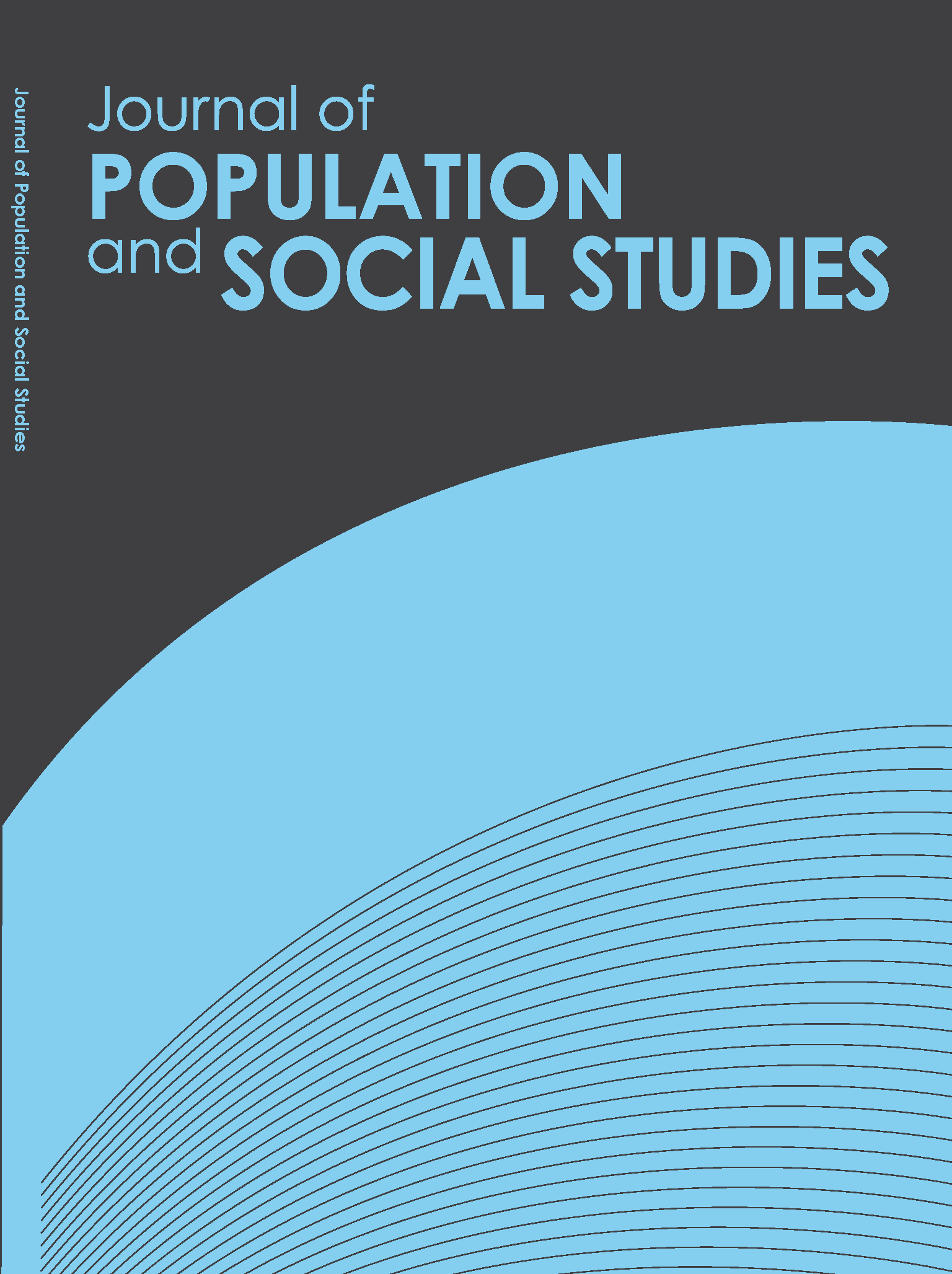Respondent-Driven Sampling: Reaching Male Youth with Drug Use Experience in Thailand
Main Article Content
Abstract
Respondent-Driven Sampling (RDS) was developed and has been widely used for recruiting sample from hard-to-reach populations such as populations at risk of HIV, injection drug users, males who have sex
with males, and commercial sex workers. This article reports on the use of RDS technique in a research among Thai male youth aged 15-24 years who ever used drugs. Beginning with seventeen respondents who were used as initial seeds for recruiting more eligible subjects, the research was able to include 749 male youth with drug use experience in the sample. Majority of the recruited youth (41.3%) reported amphetamine as their first drug, followed by those who used mitragyna speciosa (20.1%), marijuana
(17.2%), and inhalant (13.7%). Distribution of the sample youth recruited by this technique was found to be relatively normal which suggested that RDS was a reliable strategy for recruiting a sample of hard-to-reach populations. It is believed that this sampling technique can also be useful for the study of general hidden populations.
with males, and commercial sex workers. This article reports on the use of RDS technique in a research among Thai male youth aged 15-24 years who ever used drugs. Beginning with seventeen respondents who were used as initial seeds for recruiting more eligible subjects, the research was able to include 749 male youth with drug use experience in the sample. Majority of the recruited youth (41.3%) reported amphetamine as their first drug, followed by those who used mitragyna speciosa (20.1%), marijuana
(17.2%), and inhalant (13.7%). Distribution of the sample youth recruited by this technique was found to be relatively normal which suggested that RDS was a reliable strategy for recruiting a sample of hard-to-reach populations. It is believed that this sampling technique can also be useful for the study of general hidden populations.
Article Details
How to Cite
Thayansin, S. (2011). Respondent-Driven Sampling: Reaching Male Youth with Drug Use Experience in Thailand. Journal of Population and Social Studies [JPSS], 20(1), 43–56. retrieved from https://so03.tci-thaijo.org/index.php/jpss/article/view/84530
Section
Research Articles


